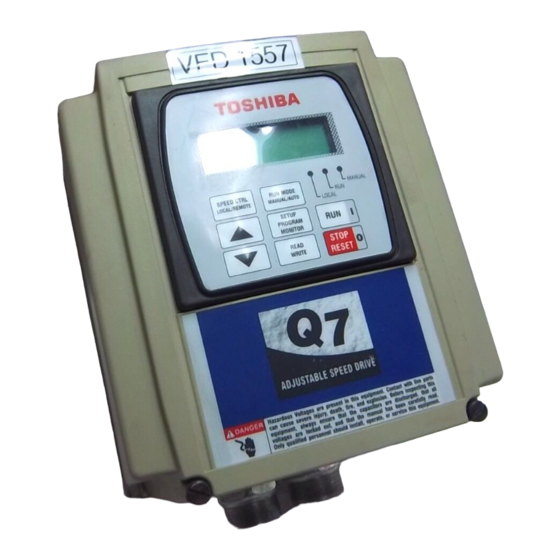
Toshiba Q7 Flow Manuals
Manuals and User Guides for Toshiba Q7 Flow. We have 3 Toshiba Q7 Flow manuals available for free PDF download: Installation And Operation Manual
Advertisement
Toshiba Q7 Flow Installation And Operation Manual (73 pages)
Adjustable Speed Drive
Table of Contents
Toshiba Q7 Flow Installation And Operation Manual (46 pages)
Q7 Flow Adjustable Speed Drive
Brand: Toshiba
|
Category: Controller
|
Size: 1.01 MB
Table of Contents
Advertisement
Advertisement


